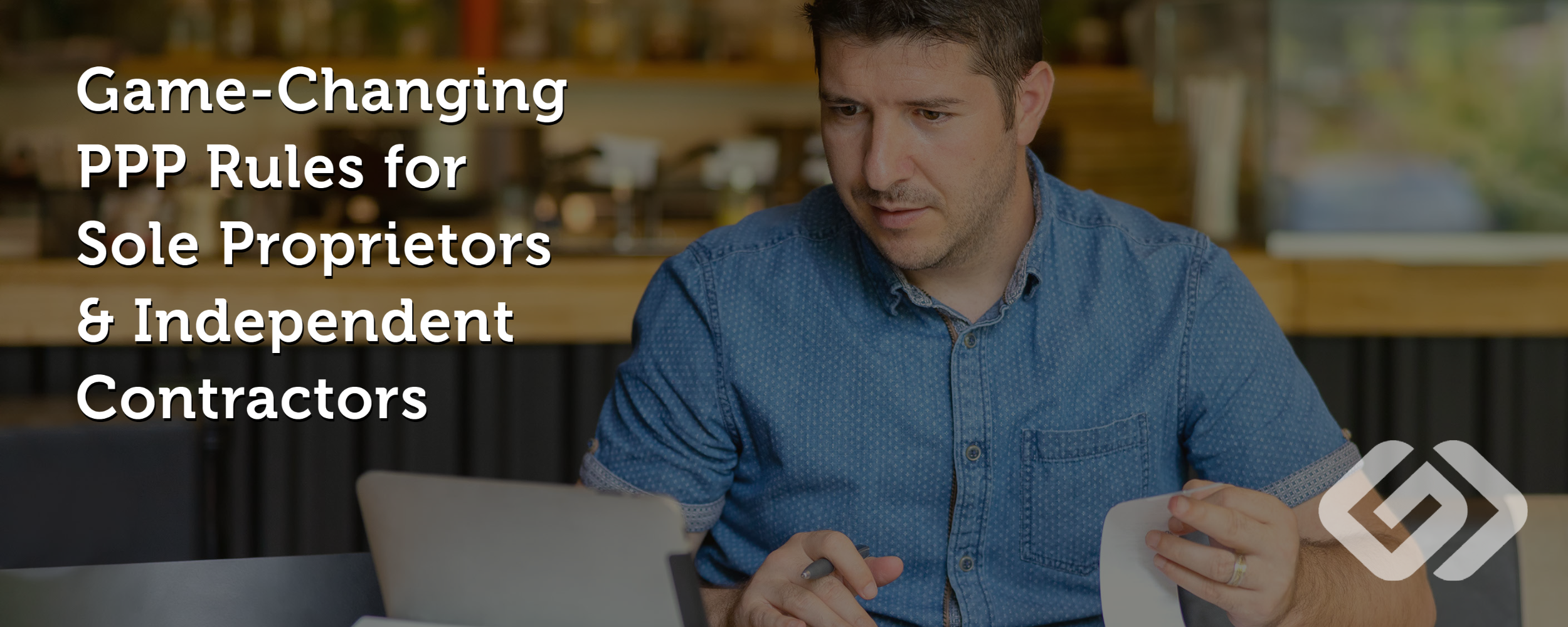Game-Changing PPP Rules For Sole Proprietors And Independent Contractors
By Martin Fox, CPA/ABV, CVA

What Changed?
On March 3, the SBA announced a major change to PPP loans for self-employed individuals who file a Schedule C. They can now elect to use their 2019 or 2020 Gross Receipts as the basis for calculating their maximum loan amount. Previously, they were required to use their Net Profit from Schedule C. This is a game-changer for many potential borrowers who were either ineligible for PPP loans due to reported losses, or who calculated their loan amounts based on net profits of less than $100,000.
The maximum PPP loan amount (First Draw) for a self-employed borrower with no employees is now 2.5 months times your average Gross Receipts (either 2019 or 2020). For Schedule C filers who also have employees, the owner’s payroll is now based on the Schedule C Gross Receipts (up to $100,000).
The calculation for the Second Draw PPP loans is the same, except that businesses in the Food and Lodging business can use a factor of 3.5 instead of 2.5.
What Does It Mean For Me?
If you are self-employed, filed (or will file) a Schedule C in 2019 or 2020, and had no employees, you are eligible to receive PPP funds up to $20,833 for the First Draw.
You can also receive funds for the Second Draw of PPP funds (after you’ve spent the funds from the First Draw loan). The amount is calculated on the same basis as the First Draw loan, with one exception. If your business is in the Food or Lodging industry, you can borrow up to $29,167.
PPP loans are entirely forgiven by the SBA as long as the funds are used for eligible payroll costs and other specified expenses. For an eligible sole proprietor with no employees, the loan will automatically be forgiven.
Who Does It Affect?
- Schedule C filers who did not apply for PPP loans because their Schedule C showed a loss
- Schedule C filers who did not apply for PPP loans because Net Profit was minimal
What If I Already Received A PPP Loan, But I Received Less Than The New Maximum?
Unfortunately, the new rules only apply to loan applications received after March 1, 2021. Watch for ongoing changes as pressure mounts in Washington. In the meantime, if you haven’t applied for the Second Draw of PPP loans, you can now use the new application.
What Do I Need To Do?
- If you’re a first-time borrower, apply now using the new Application Form for Schedule C Filers.
- If you already received a First Draw PPP loan under the old rules, you can now apply for the Second Draw loan using the new rules.
- If you have a current banking relationship, contact your bank to apply. If not, consider using an online lender. The SBA has published a list or you can use your browser to search for “Fintech PPP lenders”.
- Apply immediately (or as soon as the system opens up)! The current application period ends on March 31. Expect a backlog of applications and delays in the process as lenders deal with the new rules.
Watch For Possible Changes
The application deadline may be extended, or rules may change regarding sole proprietors who received less than the current maximum amounts.
Talk to a tax professional at Grimbleby Coleman CPAs by emailing contactus@gccpas.net if you have questions. You can #countonus to help see you through new developments in PPP lending, keeping you informed, educated, and in business.